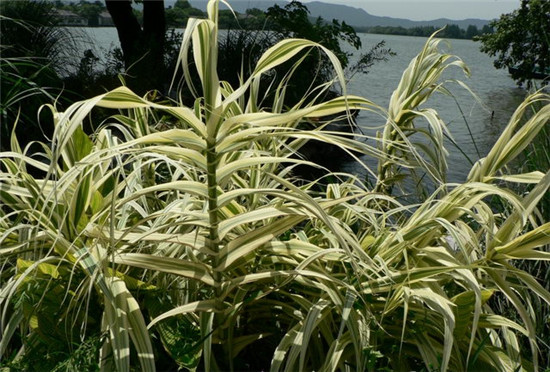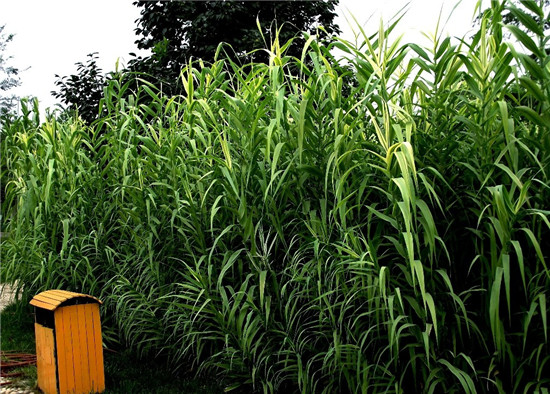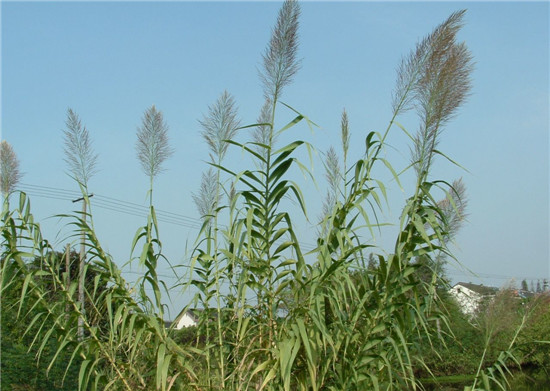The efficacy and function of Reed Bamboo Root
Reed bamboo root, also known as Reed head, stair pole for perennial herbs. Born on the moist and deep soil beside the stream and the side of the house, let's take a look at the efficacy and function of Reed bamboo root.

[synonym] Reed head, staircase pole, green bamboo.
[source] is the rhizome of Reed bamboo of Gramineae.
[usage and dosage] for internal use: decoction, 0.5: 1 Liang, or boiled ointment.
[taboo] those with weak body and no heat should be used with caution.
[nature] cold, bitter, sweet, light, non-toxic, cool.
[collection] pull up the whole plant in summer, cut off the rhizome and wash it, remove the fibrous root, slice it or dry it whole.

[medicinal materials] dry rhizomes are curved, flat and round, yellowish brown, with longitudinal wrinkles, one end is slightly thicker, there are shoot buds of different sizes, and there are fibrous root breaks around the base; there are nodes with yellowish leaf sheath remnants, or all wrapped in leaf sheaths. The quality is hard and not easy to break. It is better to be tender, dry and short stalk.
Reed bamboo is a perennial herb. Rhizomatous, fibrous roots stout. Culms erect, 2-6 m tall, 1-1.5 mm in diameter, often branched. Leaf sheath longer than internodes, glabrous or its neck villous, ligule membranous, truncated, ca. 1.5 mm long, apex shortly hairy; leaf blade flattened, 30-60 m long and 2-5 m wide, surface and margin scabrous when young.
Panicle, dense, 30-60 cm long, branches dense, obliquely ascending, spikelets with 2-4 flowers; glumes lanceolate, 8-10 mm long, with 3-5 veins; Lemma also with 3-5-veined, midvein extending 1-2 mm short awn, abaxially densely shorter than Lemma below middle, basal disc ca. 0.5 mm, upper sides pubescent, first Lemma 8-10 mm long. Palea is about half as long as Lemma. The florescence is from October to December. Born on moist and deep soil beside streams and houses.

The rhizome is curved and flat in shape, 10-18cm long, 2-2.5cm thick, yellowish brown, with longitudinal wrinkles, one end is slightly thicker, there are spores of bamboo shoots of different sizes, and there are fibrous root breaks around the base; there are yellowish leaf sheath remnants on nodes, or all wrapped in leaf sheaths. The quality is hard and not easy to break. It is better to be tender, dry and short stalk.
Like warm and humid climate. The requirement of soil is not strict, but it is suitable to choose loam with deep soil layer and good drainage. The cultivation technique uses the method of individual plant reproduction. From September to October, the whole plant was dug up and divided into several stalks, with 2-3 stems per stem. The nests were opened according to the distance between rows and plants 60cm × 50cm, and the depth was about 25cm. The upper end of the stem was cut off before planting, and the soil was covered after planting, pressed and watered. Field management in winter of that year, pay attention to watering during drought. In the second year, human and animal dung water was applied in the spring, and then weeds were removed once or twice a year, and the soil was cultivated in winter.
What are the functions of Reed bamboo root? The defatted ethanol extract from the rhizome of Reed bamboo has antihypertensive and antispasmodic effects, and can antagonize the spasm caused by histamine, 5-hydroxytryptamine and acetylcholine. Bufenidine proposed in the rhizome has the effect of anti-acetylcholine, which is stronger in skeletal muscle than in smooth muscle, excites the uterus and releases histamine. It is non-toxic to sheep, and the rhizome can be used for edema.

Effects on cardiovascular system
After the test, Reed bamboo root has an inhibitory effect on the heart of mammals, and can dilate celiac blood vessels (skin muscle blood vessels is contraction), and a large dose causes a decrease in blood pressure, so it is considered to have a weak cholinergic effect.
Effect on smooth muscle
Reed bamboo root can contract the uterus of rabbits, guinea pigs and rats in vitro, can also contract the uterus of cats, and has a slight antagonistic effect on the uterine contraction of epinephrine. It can contract the small intestine of isolated rabbits and guinea pigs.
Effect on serotonin
Reed bamboo root has a blocking effect on humbin, but they also have the same blocking effect on histamine-induced contraction. It has also been reported that grass grass can increase the level of serotonin in the brains of normal or post-used mice and antagonize the depletion of serotonin in reserpine.
Other functions
The grass in the root of Reed bamboo has a weak cholinergic or anti-adrenaline effect which can reduce the effect of epinephrine on blood pressure and smooth muscle. It does not affect the blood glucose level of rabbits. It has no effect on cholinesterase. It has an exciting effect on the central nervous system of mammals, deepening and accelerating breathing, and even paroxysmal spasms, and a large number of them lead to paralysis.
The above is the whole content of the efficacy and function of Reed bamboo root that I have summarized for you. I hope this article can help you. Please continue to follow us.
Related
- Wuhan Hospital Iron Tree Blooming Result Was Instantly Frightened by the Gardener Master
- Which variety of camellia is the most fragrant and best? Which one do you like best?
- What is the small blue coat, the breeding methods and matters needing attention of the succulent plant
- Dormancy time and maintenance management of succulent plants during dormancy
- Minas succulent how to raise, Minas succulent plant pictures
- What are the varieties of winter succulent plants
- How to raise succulent plants in twelve rolls? let's take a look at some experience of breeding twelve rolls.
- Attention should be paid to water control for succulent plants during dormant period (winter and summer)
- Watering experience of twelve rolls of succulent plants
- Techniques for fertilizing succulent plants. An article will let you know how to fertilize succulent plants.



